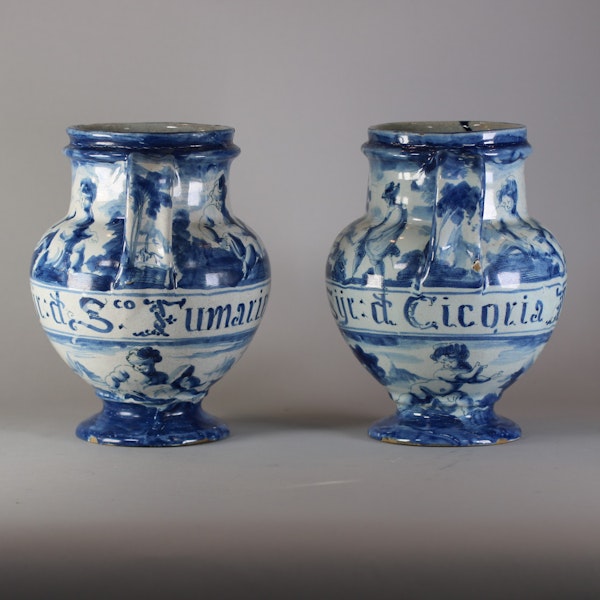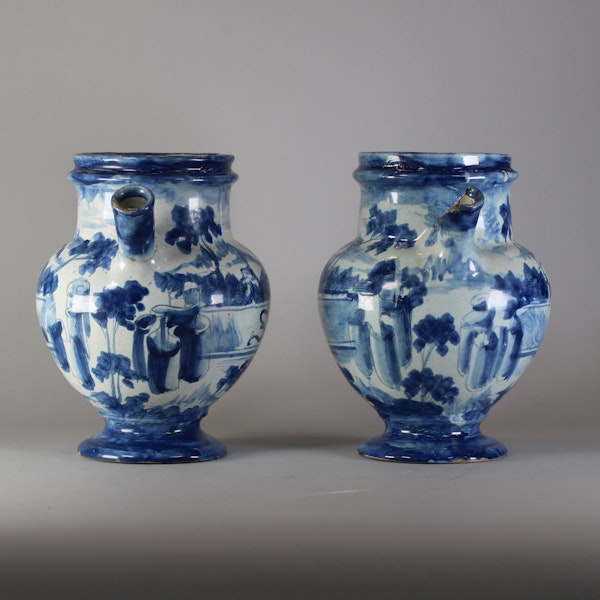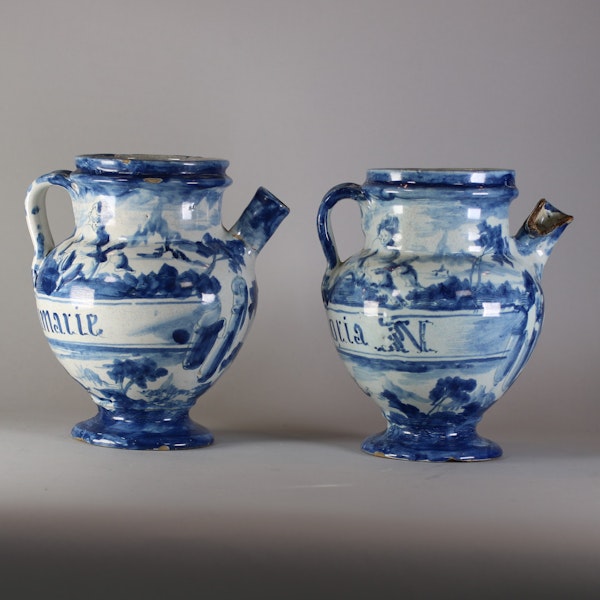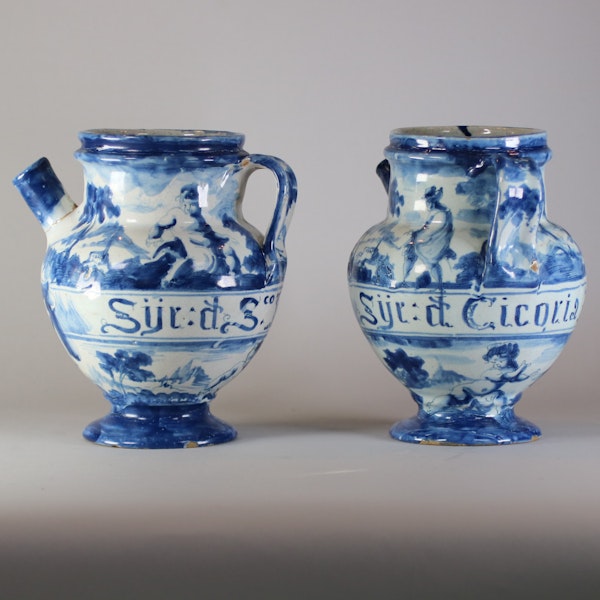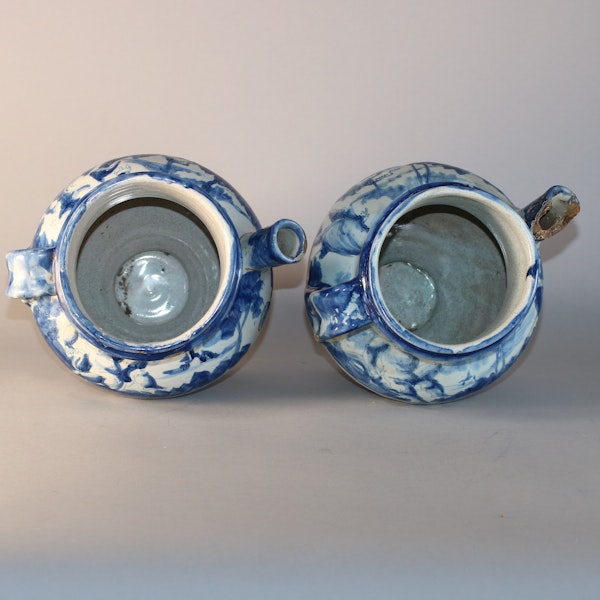Pair of Italian tin-glazed earthenware Savona wet drug jars, c.1730
Pair of Italian tin-glazed earthenware Savona wet drug jars, c.1730
POA
Description
Pair of Italian tin-glazed earthenware Savona wet drug jars, c.1730, with broad strap-like loop handle, spout and spreading foot, one inscribed on a scroll with ‘Syr de Sco Fumarie’ (possibly referring to Syrup of Scordium (water germander); ‘Fumarie’ indicating a common fumitory), the other with ‘Syr de Cicoria N’ (Syrup of Chicory, Cichorium Intybus; ‘N’ indicating black), with a continuous landscape scene with cupids and a figure in a broad-rimmed hat, the bases with a lighthouse mark; height: 20.5cm (8 1/16in.);condition: one spout with piece missing, the other spout broken and restuck, flake to one handle and minor frits to the bases. A very similar jar can be found in the collection of the V&A (C.92-1944) and was bequeathed by Sir St. Clair Thomson. The figural painting is in the manner of the Capricci di varie figure, popular etchings by the French artist Jacques Callot (1592-1635). The mark to the bases represents the famous lighthouse of the port of Genoa, known as the Lanterna. Its use was granted by the Senate of Genoa to the Grosso workshop of Albisola in 1641, and then transferred around 1700 to the workshop of the Chiodo and Peirano families in Savona.
| item details | |
|---|---|
| Material and Technique | Tin-glazed earthenware |
| Origin | Italian |
| Period | 18th Century |
| Condition | Other |
| Dimensions | height: 20.5cm |
Product REF: W245
